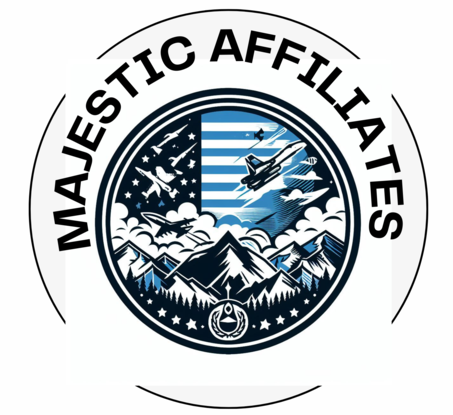Affiliate marketing is a powerful way for bloggers to monetize their content and earn a passive income. This ultimate guide will walk you through the essentials of affiliate marketing, helping you understand how to get started, optimize your strategies, and maximize your earnings.

1. Understanding Affiliate Marketing
What is Affiliate Marketing? Affiliate marketing is a performance-based marketing strategy where bloggers earn a commission by promoting products or services. When readers click on an affiliate link and make a purchase, the blogger earns a percentage of the sale.
How Does It Work?
- Join Affiliate Programs: Sign up for affiliate programs relevant to your blog’s niche.
- Promote Products: Share affiliate links in your blog posts, social media, and email newsletters.
- Earn Commissions: Earn money when your audience makes purchases through your links.
2. Choosing the Right Niche
Importance of Niche Selection
- Target Audience: A specific niche attracts a targeted audience, increasing the chances of conversions.
- Authority: Focusing on a niche helps you build authority and trust with your readers.
How to Choose a Niche
- Passion and Expertise: Choose a niche you are passionate about and knowledgeable in.
- Market Demand: Ensure there is a demand for products in your chosen niche.
- Competition: Analyze the competition to find a niche that is not oversaturated.
3. Finding Affiliate Programs
Types of Affiliate Programs
- Retailers: Amazon Associates, eBay Partner Network.
- Digital Products: ClickBank, Wealthy Affiliate, JVZoo.
- Services: Web hosting, software subscriptions.
Where to Find Programs
- Affiliate Networks: ShareASale, CJ Affiliate, Rakuten Marketing.
- Direct Programs: Check the websites of products or services you want to promote.
4. Creating High-Quality Content
Content is King
- Value: Provide valuable content that solves problems or answers questions for your readers.
- Engagement: Write engaging and compelling content to keep readers interested.
Types of Content for Affiliate Marketing
- Product Reviews: Detailed reviews of products you promote.
- How-To Guides: Step-by-step guides that incorporate affiliate products.
- Comparison Posts: Compare different products and include affiliate links.
5. Incorporating Affiliate Links
Where to Place Affiliate Links
- Within Content: Naturally integrate links within your blog posts.
- Banners: Use banner ads on your website.
- Email Newsletters: Include links in your email communications.
- Social Media: Share links on your social media platforms.
Best Practices for Affiliate Links
- Disclosure: Always disclose your affiliate relationships to maintain transparency.
- Relevance: Ensure links are relevant to the content and useful to the reader.
- Tracking: Use tracking tools to monitor the performance of your affiliate links.
6. SEO and Traffic Generation
Importance of SEO
- Visibility: Higher search engine rankings increase your blog’s visibility.
- Traffic: More visibility means more traffic, which can lead to higher conversions.
SEO Strategies
- Keyword Research: Identify and use relevant keywords in your content.
- Quality Content: Produce high-quality, informative content that answers your readers’ questions.
- Backlinks: Build backlinks from reputable sites to improve your domain authority.
Traffic Generation Techniques
- Social Media: Share your content on social media to drive traffic.
- Email Marketing: Build an email list and send regular newsletters.
- Guest Posting: Write guest posts on other blogs to reach a broader audience.
7. Analyzing and Optimizing Performance
Tracking Your Success
- Analytics Tools: Use tools like Google Analytics to track your blog’s performance.
- Affiliate Dashboards: Monitor the performance of your affiliate links through the affiliate program dashboards.
Optimizing Your Strategy
- A/B Testing: Test different strategies to see what works best.
- Content Updates: Regularly update your content to keep it relevant and improve SEO.
- Link Optimization: Optimize the placement and use of affiliate links for better conversions.
8. Building Relationships
Networking with Brands
- Partnerships: Build strong relationships with brands you promote.
- Collaborations: Collaborate with brands for exclusive deals and promotions.
Engaging with Your Audience
- Feedback: Encourage feedback and interaction from your readers.
- Trust: Build trust by being transparent and providing honest reviews.
9. Staying Compliant
Legal Requirements
- Disclosures: Clearly disclose your affiliate relationships to comply with FTC guidelines.
- Privacy Policy: Have a privacy policy that explains how you handle affiliate links and user data.
Ethical Practices
- Honesty: Only promote products you believe in and have used.
- Value: Focus on providing value to your readers rather than just making sales.
Conclusion
Affiliate marketing offers bloggers a lucrative opportunity to monetize their content while providing value to their audience. By choosing the right niche, finding suitable affiliate programs, creating high-quality content, and continuously optimizing your strategy, you can build a successful affiliate marketing business. Remember to stay transparent and ethical to maintain trust with your readers and build long-term relationships with brands and your audience.
